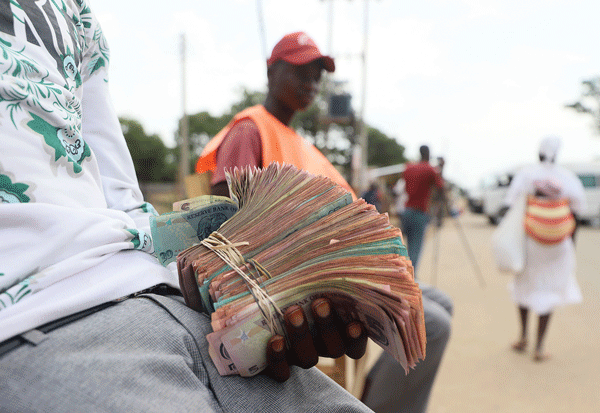
THIRTEEN years ago, in February 2009 to be more precise, the old Zimbabwe dollar buckled to its knees after taking a heavy bashing from the world’s worst ever recorded hyperinflation in the region of 500 billion percent year-on-year as of December 2008.
This is what one think-tank wrote about the horror of that era.
“Like a siren whose sweet song seduces ships’ captains, luring them and their charges to oblivion, the mania for printing money brought Zimbabwe’s economy within an inch of annihilation. Confounding money with wealth, ravaging incomes, destroying the basis of savings, enshrining the god of consumption, ruining creditors, impoverishing many, enriching a few, undermining exchange with other nations, fostering uncertainty, causing millions to flee and smothering productive forces, the government of Zimbabwe achieved, through the debauching of the currency, a feat of frightful devastation.”
Fast forward to April 2022, industry and business still very much alive to that yesteryear socio-economic carnage have sounded the siren of yet another possible economic bloodbath as the reincarnated Zimdollar faces catastrophe.
And the standoff between Reserve Bank of Zimbabwe governor John Mangudya and one of the country’s main business representative body, the Confederation of Zimbabwe Industries (CZI), over the hapless Zimdollar shows that the chickens may, indeed, be coming home to roost.
While the 2009 situation is completely different, with official inflation currently at about 72%, the fundamentals are exactly the same and CZI and others have done well to sound the alarm bells while there is still time to steer the ship before it rams into the iceberg ahead.
Our printing machines have since churned out crisp new $100 bills, which are still light years away from the trillion dollar notes (with 12 zeroes) that we were printing by late 2008.
But CZI is absolutely right to warn that the “overvalued” currency is on the “brink of rejection in the face of exchange rate instability and increasing inflation”.
- Chamisa under fire over US$120K donation
- Mavhunga puts DeMbare into Chibuku quarterfinals
- Pension funds bet on Cabora Bassa oilfields
- Councils defy govt fire tender directive
Keep Reading
CZI’s many other real, and not imaged, fears have now been well articulated in the public domain, but the bottom line is our monetary authorities and government at large should not bury their heads in the sand on this very critical matter.
That CZI has issued this stark warning reflects a business community in despair. This is a business community that rose from the ashes of the 2009 carnage, which justifies their fright of the possibility of a repeat of the events of yesteryear. They are very much alive to the consequences of failing to act in time when it comes to economic matters.
Our current Zimdollar is rapidly losing value both officially (albeit controlled) and on the parallel market, where it is fast galloping towards the $400 mark to the US dollar. And this needs no second thoughts.
The consequences of not heeding the CZI call are perilous. The pain of 2009 is slowly being reignited and citizens are feeling it. The price of bread has gone up to $480 following yet another impromptu increase in fuel prices this week.
This means, to buy a loaf of bread, one needs to use five of the new crisp $100 note, which is the highest denomination so far. This needs no rocket science to realise that the chickens are coming home to roost.






